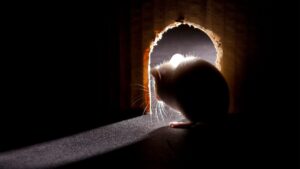I remember the world changed when I woke up around 3.00 am on 12 September where I was staying in Adelaide on this day 20 years ago. The television was on; I moved to turn it off. A plane was flying into a skyscraper. God, why do they run disaster movies at this hour, I thought. Then I realised it was real…
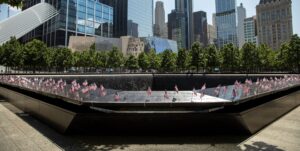
I do not generally acknowledge anniversaries…
I leave my wife to do all the heavy lifting in this regard. Yet like all people who pretend that such milestones can just be shrugged away, I am secretly moved by spontaneous expressions of affection. Father’s Day this year was a day I will remember because of the interaction with my two sons, and the way the family, their wives and children provided background sensitivity to this old blogger, heavy with hoar.
This memorable interaction was capped off by the Aylesbury duck for dinner. I can’t remember whether I have had Aylesbury duck before. Because of its quintessential association with the United Kingdom, I may have; but no special quack sticks in my head.
Our local Rozelle restaurant has gone through many changes but has survived and is now called Le Coq. Owned by a Frenchman from Réunion, it always provided an uncomplicated “un plat de jour” accompanied by a sightly upmarket “vin ordinaire”.
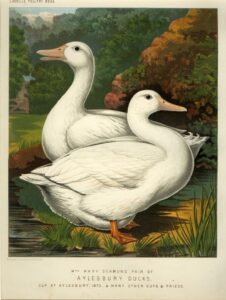
With the lockdown, the restaurant had crossed the Channel and was providing Aylesbury duck as one of the options for a “cook at home” Dad’s dinner. In other words, the restaurant prepared the raw materials, complete with an orange sauce accompaniment.
My wife is a marvellous cook, but the instructions were simple. Just pre-heat the oven to 200oC and place the duck in the oven for 45 minutes. Take the duck out of the oven, add the Kipflers and Brussel sprouts and then put everything back in the oven for 15 minutes; complete by reheating the orange sauce on low heat for five minutes. Even a Kooking Klutz like me could do it (but I didn’t).
Brilliant, brilliant meal, even if the chestnuts were water chestnuts!
No, I don’t think I had Aylesbury Duck in Aylesbury, but I have enjoyed its relative in Peking, as it was once called.
A small plane flew over the Caribbean Coast and I never noticed
I don’t generally keep correspondence, but I still have one letter from Greg, written on Scripps Clinic and Research Foundation notepaper, dated 17 December 1971 and, as he said in his letter, he would have sent a Christmas card except that “the millionaires of La Jolla have revolting taste and I can’t find any I like.”
That was Greg – just a tiny explosion out of nowhere. Presumably that is why we took such an instant dislike to one another when we first met. We were too much alike – I, a pathology registrar and he, a laboratory scientist.
Greg developed a relationship with another laboratory scientist, a beautiful Chinese woman called Neva, who came with impeccable Shanghai heritage, and had a serenity which counterpointed Greg’s impetuosity.
Neva was friendly with both of us, and it was a time which I recounted in an earlier blog, about being feted in a particular Chinatown restaurant. I have a recollection that we came together for a very good night. Greg and I, previous adversaries, bonded. Maybe it was another time, but the point of this narrative is that we became friends. His wider circle of friends was different from mine, as instanced by his taking all of us up to Dunmochin, the property owned by Clifton Pugh at Cottles Bridge in that artistic quarter of outer Melbourne.
Then Neva went to Canada; and Greg left Australia soon after, but not for Canada. As he said in his letter, he had crossed the Pacific on a slow boat, and from Panama he had flown to Bogota, then by “a very dangerous small plane” to Leticia, the only Colombian city on the Amazon River, where three countries intersect: Colombia, Peru and Brazil. Boat to Manaus took seven days down the Amazon; and then that seemed enough on the river because he hitched a ride with the Brazilian air force to Belem, near the mouth of the Amazon, and then took a bus via Brasilia, motoring down to Rio de Janeiro.
He worked in a “dreadful little clinical Laboratory” there for 100 days, before he decamped to Sucre and Potosi, the baroque colonial past in Bolivia. It did not mention whether he enjoyed Potosi, about 4,000 metres above sea level and Sucre, at a more comfortable 2,800 metres above sea level. Sucre was where the Spanish conquistadors preferred to live in sub-tropical splendour in summer. At the same time their solid silver lifestyle was being mined in the surrounding Andes.
Then he went on to La Paz. He did the obligatory pilgrimage to Macchu Picchu in Peru, up the coast to Ecuador and back into Colombia via Cali to Bogota. Not a mention of drugs, but I knew Greg liked an odd joint or two.
Then one line in the letter transports him up to the Colombian Caribbean Coast, which must have been quite a journey, especially when catching a small boat to the Panamanian frontier, and then a small plane to Panama City. I took this part of his travels at face value – still do, although some might read the words twice.
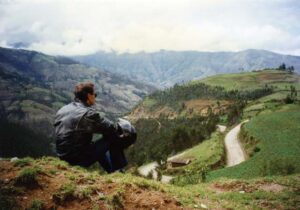
When I pause in re-reading this letter 40 years later, I realise in a paragraph how great was the experience gained as he purchased a motorbike to ride through Central America towards California, the end point. He rode through Guatemala, with its magnificent Mayan ruin at Tikal, and Mexico gets a mention. You would think that was by motorbike – a sort of Easy Rider. However, somewhere along the way, the motorbike was ditched and he wrote that he had “a marvellous time travelling mostly on the backs of trucks, hitchhiking and in trains”. Countries are not differentiated; some people are marvellous. The letter from the ever-optimistic Greg ends in California.
At the time of the letter he was working as a technician, the parenthetic comment being the scientist’s rank without a PhD. He was working in the laboratory of Ralph Riesfield with three Italians, one German and three Americans (all unnamed). Riesfield had just arrived at Scripps, already a well known and successful scientist who, as a young man searching for a career, had consulted Einstein. Einstein had probably recognised Riesfield as a fellow refugee from Vienna, escaping as he did in 1938 with the Gestapo a street away. In itself this may have attracted the interest of Einstein, who may have recognised the family name.
While at Scripps, Riesfield distinguished himself as a pre-eminent immunologist, involved in the development of immunological agents to treat cancer.
Greg hoped to work another year at Scripps and then get on with his quest, heading off to Africa then to Europe, hoping to get work, then back through Asia and home.
I hope he had a good life. I never heard from him again. I wonder whether he ever saw Neva again. But I kept the letter, because I wanted to remember a time when there were guys like Greg whom I knew and who, even for a short time, made my life richer.
The Hotel Pattee
The train don’t go through Perry no more.
However, I get ahead of myself.
We decided once we had got to about 35 States of the United States of America that we should make an attempt to visit them all. We had friends and acquaintances who lived in America.
I recalled one guy who had been a post-graduate at the University of Melbourne. He was always Mac to me. I don’t know how we met, but I remember him as tall Yankee, a member of the Democratic Party. We lived in those heady times of John Kennedy and, for a time, we all had hope of a new world in which Kennedy would play a central role. We loved his sense of informality, the informality of youth. Mac told me about a friend of his who worked on one of the Asian desks in the State Department; his phone rang and it was Kennedy on the line. He wanted some information and so he went straight to the guy who had it.
In those days we didn’t have many savvy Yank scholars in our midst – especially one who was young, a budding historian, and who had served as an officer in the Marine Corps. He was eight years older than me, but I think he found me interesting, perhaps because 1960-61 was the period of my Presidency of the Student Representatives Council. Occasionally in your life you enter a circle in which, for a while, you are influential and attract attention before fading back into the ruck.
Mac was very much an Ivy League product, a Harvard graduate, who was returning to a post at Princeton after his year in Australia. He married soon after he returned to the US. I know that much.
Fast forward to 2009, and I knew from desultory correspondence with him, that he had ended up at the University of Iowa where he stayed for his whole professional life, building up a formidable reputation as an American History scholar. I later found out his area of research included the Appalachians, which had always interested me, as has westward movement of the white settlers into Indian territory with the dispossession of the indigenous tribes, which became such a stain of what is referred to as “civilisation”.
Iowa city is the University town where Mac lived for most of his career. As we had never been to Iowa I decided to write to see whether he was still there. He replied to say he had retired from his academic post the previous year, assumed the title of Emeritus and moved back to the East Coast where he was born. The bare facts; no mention of wanting to catch up – after all what was there to talk about after over 50 years since last contact.
So that was that – no reason to go to Iowa City. No reason to go there, but we did. It is a three hour drive from Chicago, where we were staying with friends. Chicago is one of my favourite cities, but that is in a raft of other stories.
Iowa city was like many of its kind, owing its existence to the University; clean, respectable, middleclass-familiar. We stayed in the University hotel overnight, nothing much to do so we ventured out into the wilds of Iowa.
I remember that scene in the Hitchcock film “North by Northwest” where Cary Grant’s character in the film was being pursued in the corn field by a crop duster plane. For some reason I always thought it was meant to be Iowa; in fact it was supposed to be Indiana but was actually filmed in California. Anyway, if one wants to see flat plains covered in soya beans, Iowa is the place – with or without a vengeful crop duster plane.

We headed out into rural Iowa and spent the day driving around Madison County looking at the six covered bridges, which had been highlighted in the eponymous film a decade before with Merryl Streep and Clint Eastwood playing lovers.
To get to Perry, we needed to bypass Des Moines. The covered bridges are scattered, which meant considerable driving over unfamiliar backroads to find them. Thus, we were a bit tired when we reached Perry.
We stopped outside one of those Beaux Arts buildings with the vaguely Italianate style, which reflect the wealth of turn-of-the century America. This was a hotel, which announced itself on its green portico as the Hotel Pattee. As we found out, it had been built in 1913 when Perry was a thriving railway town, but had fallen into disrepair until resurrected by a lady who had been born in Perry, remembered the heyday and was determined to renovate the old hotel. Renovate was not quite the word, because each of the rooms had been meticulously renovated in a certain style. For instance, there was a Swedish Room, an Irish room, a Mexican Room, even a Quilt room – different motifs for a host of different rooms (but no Australia room).
There is even a Chautauqua room, although for those getting misty-eyed about that eponymous racehorse, Circuit or “tent” Chautauqua refers to a movement seeking to bring self-realisation and self-improvement. The first Circuit Chautauqua appeared in 1904 and travelled to 15 towns in Iowa. The goal was to deliver educational, spiritual, and cultural stimulation to rural and small-town America. Theodore Roosevelt described Chautauqua as “the most American thing in America”. Chautauqua is an Iroquois word that was used to describe a lake in western New York where this movement started.
However, we ended up in the Italian room with the ornate iron bed, lush drapes and hangings from Assisi and Fortuny silk chandelier. There were other reminders of Italy, for instance in faux-lava wall cameos; the illusion of a room in an Italian villa was created. There was even an Italian version of the prie-dieu complete with kneeler. No photos exist of me trying it out to see if She was around.
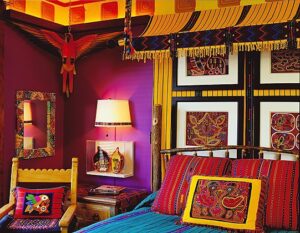
While it was exotic, there were some tell-tale signs that a blanched pachyderm had stalked the lobby. There was a reconstructed Diner, which was closed except for breakfast. Even now, one can see how many times the hotel has changed hands, but remained open. Nevertheless, the pachyderm still hovers.
As we found out, the woman who had extravagantly, if imaginatively, renovated the property has been forced to sell it three years before, and it had just re-opened when we stayed. There was a quality of impermanence in the air, because the rooms had been so carefully tailored to reflect this woman’s idea of a particular culture. The Italian room ostensibly celebrated that many Italians worked on the railroad. As as we walked around the town, we saw it was not a folly.
This was a workers’ town, not a tourist re-creation despite the exotic Hotel Pattee. There was still an active foundry in the centre of town, belching smoke into the air, the doors open so we could see the furnace; and we were lucky to find a laundry behind the hotel, where the women owners were very friendly and did our accumulated washing very quickly – we promised to send them a clutch of clip-on koalas for their trouble.
When experience is weighed, that day was one of the most unexpected. Covered bridges are another part of our American adventures; maybe one of us will write about it, because you must squat and have a slice of American pie after walking through each of those structures.
The Hotel Pattee was one extraordinary structure enough for one day, a day which started the day years before I first met Mac.
Never Drop Your Guard
Erin Goodyear, 28, is recovering from a breakthrough (COVID-19 vaccine) infection contracted after traveling to Arkansas for a 10-year high school reunion while cases were spiking.
She felt secure enough to attend the reunion, held in a well-ventilated venue, and to stay with her vaccinated parents. Goodyear does not regret her decision because of the opportunity to reconnect with old friends. But she wishes she had avoided certain activities, such as the drag show in a poorly ventilated and packed basement bar she attended after the reunion.
After returning home to the District, Goodyear experienced an illness she described as a two-day cold that left her weak but not worried enough to get a coronavirus test until a friend suggested it. She also was concerned she might have infected her parents, who are vaccinated and did not become sick. Now, she has her guard up and plans to wear a mask, socialize outdoors and skip bars.
“Maybe my risk tolerance will change in the fall and winter when I’m lonely and want to see people, and I may have to do that inside more,” said Goodyear, who works for a non-profit. “The physical recovery and mental and emotional recovery did take a toll, and I just don’t want to go through that again either.” – from The Washington Post.
This is another reminder that social life is a viral challenge for the young mobile cohort, even to those like herself, who have been either fully vaccinated or have endured the disease full on, or both.
I have written about breakthrough earlier as a warning that it occurs. I agree with the approach of the Chief Medical Officer, Paul Kelly, that these should not be overplayed, but on the other hand, the experience of those who have suffered breakthrough should not be discounted either. I have already quoted one in an earlier blog and in this case of a young woman who travelled to Arkansas (a largely unvaccinated State) for a 10 year reunion. This visit included a packed underground bar late at night. You can imagine the roistering going on – a perfect climate for the Virus to have a field night. Even for someone fully vaccinated, it was obviously not enough. She had a mild COVID-19 episode, and now had moved on, leaving this anecdote behind.
It reminded me of my days when we would be packed into hotel bars, often with low ceilings, with the air thick with cigarette smoke, and I being one of the smokers. Most of us weren’t taken immediately to the nearest hospital with respiratory disease.
Okay, in our student days we would wake up the next morning with a hangover and in the colourful parlance of the time – a mouth like the bottom of a cocky’s cage”. However, fast forward in time, and those who persisted in smoky environments, still smoking (the equivalent risk of being unvaccinated), and eventually the hacking cough of chronic bronchitis compounded by cancer of the lung led to be a hospital statistic, whether or not in ICU.
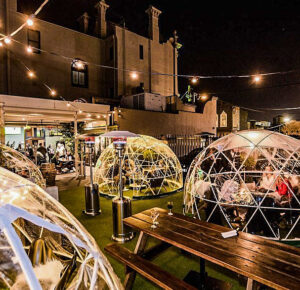
We have not eliminated smoking, but here in Australia smoking is contained, but not zero, and moreover has fallen out of favour as a social transactional tool. Maybe the same will happen to enclosed bars and night clubs until the community adopt a social distancing standard equivalent to the smoking ban in such areas.
Therefore, the Virus should begin to elicit the same response even if, at the moment, there are places in Australia where it has been suppressed. Victoria is battling it, NSW has given up, the other States must determine the rules which will allow lotus land to be preserved – yet not in aspic.
Let us be under no illusions. Nobody has a clue how to safely navigate this country out of this muddle. I feel very sorry for Paul Kelly, the only bastion of sanity in Canberra; “the only rational squeak in the Morrison bubble”, as one wit put it. When I get the chance, I listen to Kelly very closely since he has been very clear-headed and remarkably outwardly calm during this whole crisis.
As I wrote very early in the Virus invasion, Australia should have built special quarantine centres in each State. However, I assume nobody in this country wants to admit anybody carrying disease. I could imagine Barnaby Joyce’s mob screaming if he said, “let all the cattle or their products in without quarantining them for foot and mouth (FMD) disease”. We have not had any FMD, a devastating disease in cattle, on this Continent since 1872 – I think that makes the point. Victoria and Queensland seem to be going to produce bespoke quarantine centres, but not NSW.
Determine the regime for vaccination and determine now (not in some Morrison future) the optimal time for boosters. This chopping and changing around only confuses even those of us with some knowledge.
Determine which age you commence the program. I hit upon 12 years of age in a previous blog. It may be earlier, but whatever the age, remember that this Virus seems to use children as an efficient Vector.
Why do I keep banging on, because some governments seem to be possessed with the infantile notion that either we can live locked up or that it does not matter that the health system may collapse under the weight of cases (we’ll just adjust our model to remove that assumption) – because in the end, folks, it’s the ivermectin or hydroxychloroquine or, may I say it, the blood of Jesus Christ which will save us. Just ask the Texans.
Mouse Whisper
It is called the Armenian Fallacy. Here am I, propped against my mousehole door, looking at some person who looks very serious and is called Susan Pearce. She apparently has drunk from the same bowl as her Boss because she has switched from daily totals of increases in vaccinations to a weekly average, because the rate of vaccination has slowed, inevitably.
In the meantime, the number of people being tested is increasingly a meaningless statistic. After all, it is mandated for those living in the uber-locked down LGAs who work in essential jobs in the community. Therefore, if it is compulsory, then most people obey and the bigger this cohort with in turn a required frequency of testing will dictate the number of tests parroted each day by the government. Yes, compliance; but nothing to do with health status.
The other statistic she used was that 90 per cent of people with the Virus are being treated outside hospital. Even a little mouse like me would think that misleading – it is the actual number in hospital which counts when measured against existing resources. Morrison used the same fallacy when using percentages to downplay the effect of hotel quarantine breakout.
The day of reckoning is upon us, but I can retreat into my Mousehole, and pretend I am in Cornwall.
